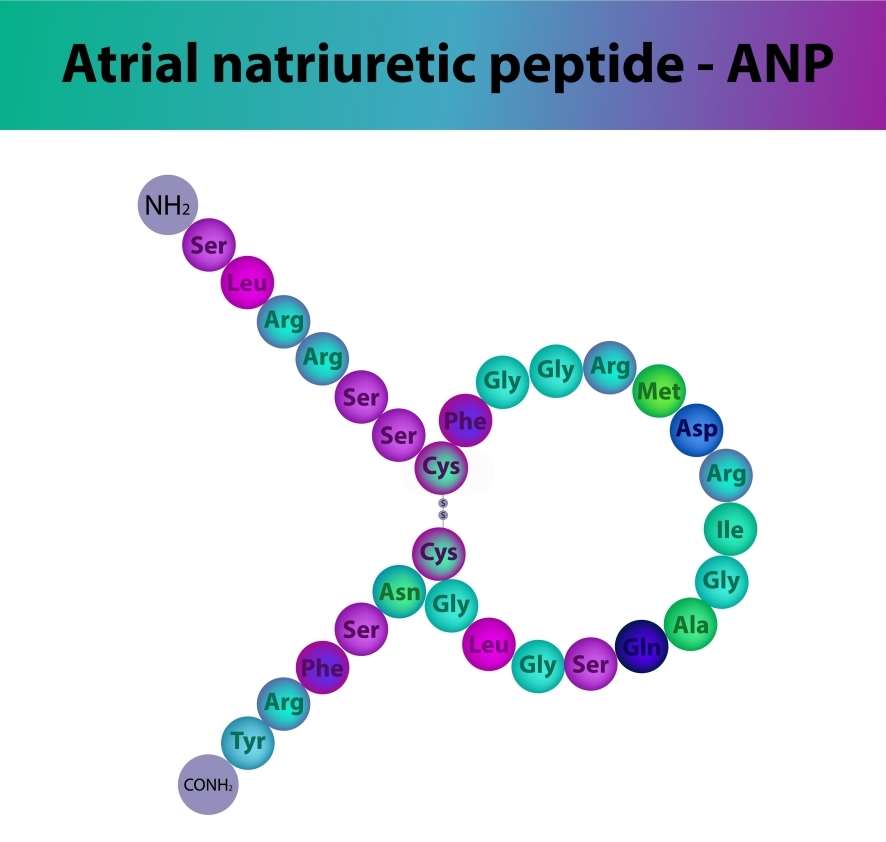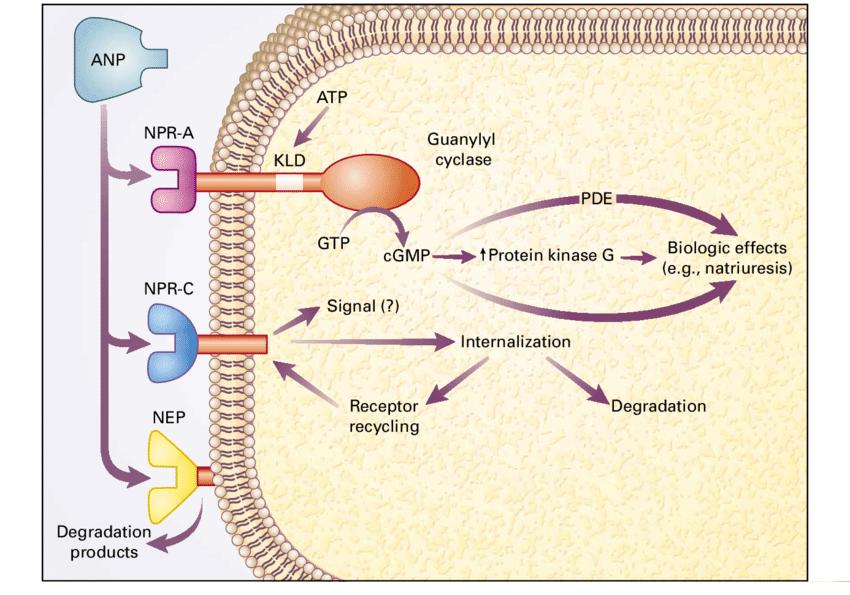Atrial Natriuretic Peptide (ANP) is a peptide hormone synthesized and released by atrial myocytes. ANP in human blood circulation is composed of 28 amino acid residues, and its receptor is a guanosine cyclase on the cell membrane. The ANP receptor is a dimer of single transmembrane peptides, each of which contains an extracellular hormone-binding domain and an intracellular structural domain consisting of a protein kinase-like ATP-dependent regulatory domain and a GC-catalyzed domain.
 Fig. 1. Structure of ANP.
Fig. 1. Structure of ANP.
Compared to ANP, mini-ANP has a shorter peptide chain, usually consisting of 10 to 15 amino acid residues. By shortening the peptide chain, mini-ANP retains some of the key structural and functional regions of ANP while reducing the size and complexity of the molecule. mini-ANP has physiological effects similar to those of ANP, although the strength and persistence of its effects may differ. It may play a similar role in the regulation of fluid balance, blood pressure regulation, and cardiovascular function.
ANP (3-28), rat, also known as rat ANP (3-28), is a fragment of ANP found in the rat. ANP (3-28), rat is missing the first two amino acids at the N-terminal end of the ANP, tyrosine and isoleucine, compared to the complete ANP. This shortened fragment still retains some functional regions and biological activities of the ANP molecule.
ANP (8-30), frog, also known as frog ANP (8-30), is a fragment of ANP found in frogs. ANP (8-30), frog is missing the first seven amino acids at the N-terminal end of the ANP as compared to the intact ANP. ANP (8-30), frog is often used as an ANP-specific fragment in research to study the structure, function, and biological activity of ANP.
The activity of ANP is mediated by the ANP receptor or the A-type natriuretic peptide receptor carrying the catalytic activity of intrinsic guanylate cyclase (GC). Binding of the hormone to the receptor stimulates GC catalytic activity, which increases intracellular cGMP levels. In turn, cGMP mediates hormone action through cGMP-regulated ion channels, protein kinases, and phosphodiesterases.
 Fig. 2. Action of atrial natriuretic peptide (New England Journal of Medicine. 1998, 339(5): 321-328).
Fig. 2. Action of atrial natriuretic peptide (New England Journal of Medicine. 1998, 339(5): 321-328).
(1) Binding to ANP Receptor
ANP binds primarily to the B-type natriuretic peptide receptor (ANPRB) on the surface of the atria and other tissues. Binding of ANP to ANPRB activates guanylate cyclase in the receptor, which converts intracellular guanosine triphosphate (GTP) to cyclic guanosine monophosphate (cGMP).
(2) Effects of cGMP
By increasing intracellular cGMP levels, ANP regulates the activity of a variety of cell signaling pathways and effector proteins, resulting in the following physiological effects.
Clinical diagnosis. Measurement of ANP can be used as an aid in the diagnosis of certain cardiovascular diseases. For example, in the diagnosis of heart failure, ANP levels are usually elevated and can be used as one of the indicators of heart failure.
Blood pressure regulation. ANP has an antinatriuretic effect and is able to regulate fluid balance by promoting sodium excretion and increased urine output.
Study of cardiovascular physiology. Understanding of cardiac function, vascular tone and fluid balance can be improved by studying the biological activity, receptor signaling pathways and regulatory mechanisms of ANP.
Reference